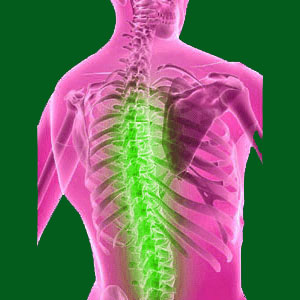
Spondylolisthesis hypolordosis describes a reduction in normal spinal curvature in the lower back or neck that is demonstrated in association with vertebral migration. Either condition may be primary causative and either condition might be secondary consequential.
Since the spine is a dynamic structure in which all components and their respective functionality influence every other, it is very common for patients to present more than one effect from any spinal irregularity. In the case of spondylolisthesis and hypolordosis, the 2 atypicalities are often directly linked in cause and consequence relationship.
This essay details the possible relations between listhesis and a loss of typical lordosis in the lumbar or cervical spinal regions. We will explore cause and effect scenarios for both diagnoses, as well as other contributing factors.
What is Spondylolisthesis Hypolordosis?
This entire website is dedicated to explaining the causes, symptoms and treatments of spondylolisthesis.
If you have any doubt about what the condition entails, please begin by reading our article titled: What is Spondylolisthesis. This way, you will understand the basics of the diagnosis before proceeding.
Hypolordosis is defined as a deficiency in the degree of sagittal spinal curvature (front-to-back) in the lumbar or cervical regions. Both of these spinal zones typically demonstrate a gentle sagittal curvature, but this curvature can increase or decrease due to many possible causes. When the curvature decreases, the spine becomes straighter and more susceptible to shock and injury. This is called hypolordosis.
Since listhesis generally occurs in the lumbar region and less commonly in the cervical region, it is often seen in conjunction with various lordosis abnormalities, including related hypolordosis.
Listhesis Hypolordosis Primary
In cases of primary spondylolisthesis, the hypolordosis might be considered a secondary manifestation of the vertebral slippage. This means that the listhesis occurs first and causes the hypolordosis to ensue thereafter.
The usual source of hypolordosis as a secondary consequence to spondylolisthesis is when the vertebral migration follows a retrolisthesis profile and causes the muscular tissues of the spine to pull the region straighter in order to stabilize the abnormally migrated level. Typically, this type of hypolordosis is muscularly-enacted and is not considered as structural defect as much as a functional consequence.
This primary listhesis, secondary hypolordosis condition can occur in the lumbar spine or cervical spine. However, most cases occur in the lower back, usually involving L5 or L4 as the most common areas affected.
Spondylolisthesis Hypolordosis Secondary
In other cases, the hypolordosis can actually cause or contribute to the development or worsening of spondylolisthesis. This profile is less often seen and might be more difficult to prove without a history of imaging studies that predate the listhesis development.
Typically, some reason exists for chronic hypolordosis to present in the lumbar or cervical spinal zones. This cause can be spinal-structural or muscular-functional. It is often related to chronic poor posture in people with otherwise typical spinal anatomies.
Regardless, the loss of spinal curvature might create stress on certain areas of the vertebral bones usually on the descending end of the curvature, potentially creating added incentive for the development of pars interarticularis or spinal joint injury and subsequent spondylolisthesis migration.
Often, in these profiles, there are other factors involved in contributing to the listhesis condition, including low bone density, congenital defect of the pars interarticularis, traumatic injury or severe disc abnormality.
Spondylolisthesis > Consequences of Spondylolisthesis > Spondylolisthesis Hypolordosis



